The marks on silver and sterling silver jewelry from Mexico may reveal the age, silver content and origin of the piece. These marks are found on necklaces, bracelets, rings and even tiny earrings; they appear on antique and vintage jewelry, as well as on newer pieces. You can read the marks on Mexican silver jewelry by using a loupe, a small magnifying glass made specifically for examining jewelry. Learning how to interpret what you see will make you a better shopper and help you understand the value of the pieces you already own.
Locate the silver jewelry marks. The marks are usually on the backside or inside of fine jewelry, and sometimes on the clasp of a bracelet or necklace. They may be on the screw of a screw-back earring, or on the backside under the screw.
Determine the era during which the piece was crafted. If the mark is "Mexico Silver" or "Mexico Plata," the piece was made prior to 1960. Similarly, variations on an eagle mark were used from 1948 to 1979 — a fully sketched-in eagle was used until 1955 and then was replaced by a silhouette. Newer marks have two letters followed by a dash and a number — for example, TC-902. This system was started about 1979 or 1980.
Read the silver content. Mexican silver jewelry may be marked .925, which means it is 92.5 percent pure silver; this is the minimum standard for sterling silver in the United States. It's not uncommon to encounter Mexican silver with marks of .950, .970 and even .980.
Look for marks indicating area of origin. The new marking system — TC-902 and similar — is simple to read. "T" is the city of origin, Taxco, which is a major silver center. "C" is the last name of the maker. The number, 902, means the maker is the 902nd silversmith to get a number in the "TC" category. Mexico City's abbreviation is "M," and jewelry with this designation is commonly found in stores in Texas.
Determine the origin of jewelry with the old eagle mark. The eagle should contain a number inside its stamp. Number 1 was for jewelry from Mexico City and number 3 was for jewelry made in Taxco. Certain makers may have had a number, too. For example, there's evidence that Bernice Goodspeed, a famous jewelry designer based in Taxco, used the number 28, and that her contemporary, Margot Van Voorhies or "Margot de Taxco," may have used the number 16.
Related Articles

How to Tell If a Silver Chain Is Real

What Does 585 Mean on Gold?

Does Gold Jewelry Have to Be Stamped?
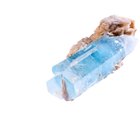
List of the Types of Semi-Precious ...
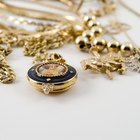
How to Number a Jewelry Inventory

How to Look Up the Roll Numbers for ...

How to Identify Your Tissot

What Is TDW Diamond?

What Is 916 in Jewelry?

How to Determine if a Necklace Is Real ...

How to Tell a Real Tiffany's Necklace ...
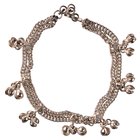
How to Identify Unmarked Jewelry
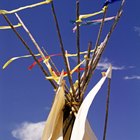
How to Obtain a Choctaw Indian Roll ...

How to Tell If It's Gold Filled or ...

What Is a Slave Bracelet?

What Is 21K Gold?

How to Identify a Counterfeit Gucci ...
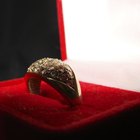
What Is 18 Carat Gold?

How to Find Out How Much a Rolex Watch ...

How to Make a Dog Tag Chain Shorter
References
Writer Bio
This article was written by the CareerTrend team, copy edited and fact checked through a multi-point auditing system, in efforts to ensure our readers only receive the best information. To submit your questions or ideas, or to simply learn more about CareerTrend, contact us [here](http://careertrend.com/about-us).